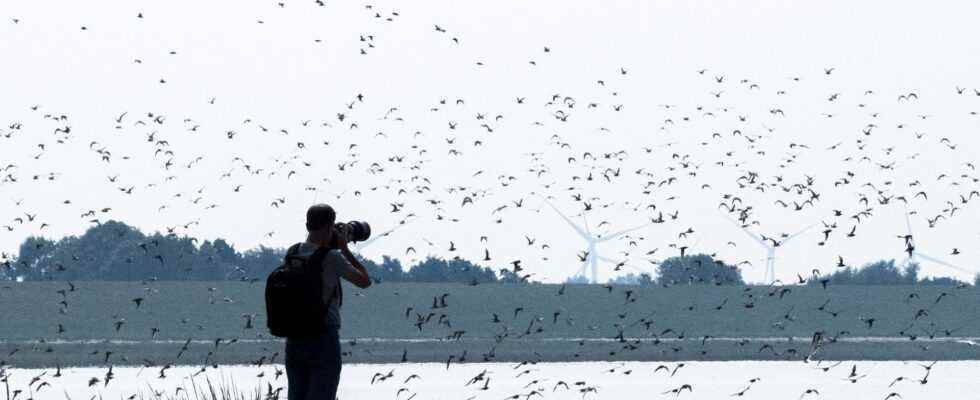Because of climate change, the habitats of some migratory birds along their East Atlantic migration routes are threatened. This is according to a recent report. In northwestern Europe, the rising sea level is already one of the main burdens, the Joint Wadden Sea Secretariat in Wilhelmshaven announced on the occasion of the publication. The Wadden Sea off the coasts of Denmark, Germany and the Netherlands is considered the hub of East Atlantic bird migration. Millions of birds eat up food reserves for their onward flight between Africa and the Arctic in the UNESCO-designated wetland.
Climate change is having an impact on most coastal areas, said Kristine Meise, Program Manager Migration and Biodiversity at the Wadden Sea Secretariat. In the Wadden Sea, for example, in addition to the rise in sea level, extreme weather events such as heavy rain and storms are increasingly affecting the birds when resting and breeding. The consequences of climate change, for example through erosion on the coasts for migratory birds, are already being felt in the main wintering area off West Africa, said Meise. According to the study, other factors such as overfishing, shipping traffic and logging have an even greater influence there.
The assessments of habitat pressures are part of the investigation report published at the end of April 2022. Since 2014, the project has simultaneously counted migratory bird populations along the East Atlantic bird migration every three years. The 2020 census, the results of which are now available, involved more than 13,000 people in 36 countries.
It is important to record migratory birds at the same time
Such regular counts are important in order to identify changes in the populations at an early stage, said Meise. “The difficulty is that a migratory bird does not usually stay in one place, and sometimes it changes its flight path. So it can be that the number of birds of a certain species in the Wadden Sea decreases, but globally the population remains stable or even increases.« In order to measure the global population, all places where the birds can occur must therefore be recorded simultaneously will.
